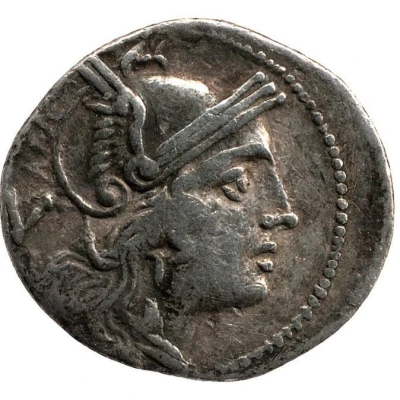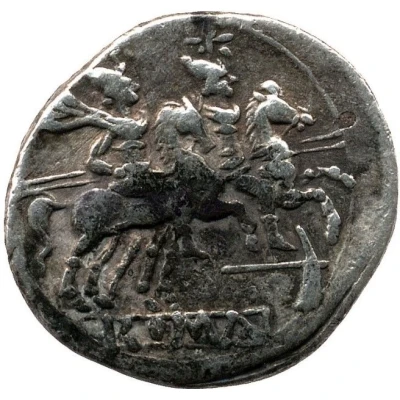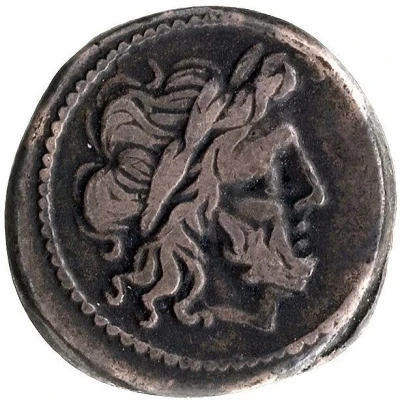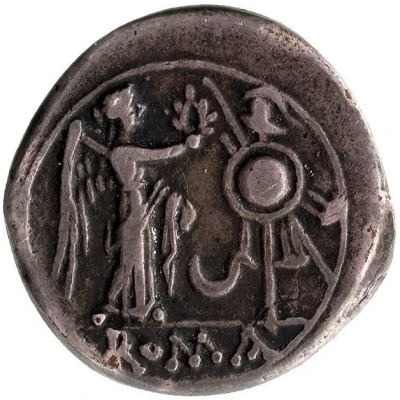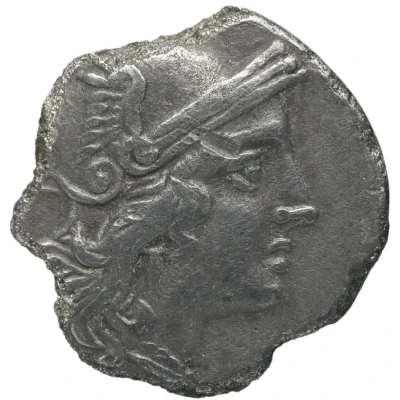
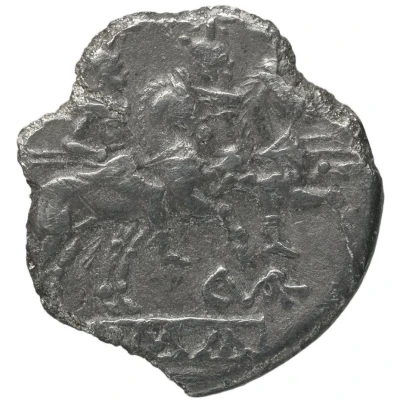

© Bibliothèque nationale de France / Gallica
Quinarius C. Varro; ROMA 209 BC - 208 BC
| Silver | 1.59 g | 13.7 mm |
| Issuer | Rome › Roman Republic (509 BC - 27 BC) |
|---|---|
| Issuing entity | Gaius Terentius Varro |
| Period | Republic (509 BC - 27 BC) |
| Type | Standard circulation coin |
| Years | 209 BC - 208 BC |
| Value | Quinarius (½) |
| Currency | Denarius of 10 Asses (221 – 141 BC) |
| Composition | Silver |
| Weight | 1.59 g |
| Diameter | 13.7 mm |
| Shape | Round (irregular) |
| Technique | Hammered |
| Orientation | Variable alignment ↺ |
| Demonetized | Yes |
| Updated | 2024-10-06 |
| Numista | N#386372 |
|---|---|
| Rarity index | 100% |
Reverse
Dioscuri galloping right. Line border. Below, legend (C (monogram of VAR)). Below, in linear frame, legend. Linear frame.
Script: Latin
Lettering:
C·VAR
ROMA
Translation: Rome
Comment
Minted in SicilyGaius Terentius Varro (fl. 218–200 BC) was a Roman politician and general active during the Second Punic War. A plebeian son of a butcher, he was a populist politician who was elected consul for the year 216 BC. While holding that office, he was decisively defeated by Hannibal at the Battle of Cannae. (Wikipedia)
Interesting fact
The Quinarius was the first Roman coin to feature the image of a deity, with the goddess Roma depicted on the obverse (front side) of the coin. This was a significant departure from earlier Roman coins, which had typically featured images of animals or abstract symbols. The inclusion of a deity on the Quinarius coin reflects the growing influence of religion in Roman society during this time period.
